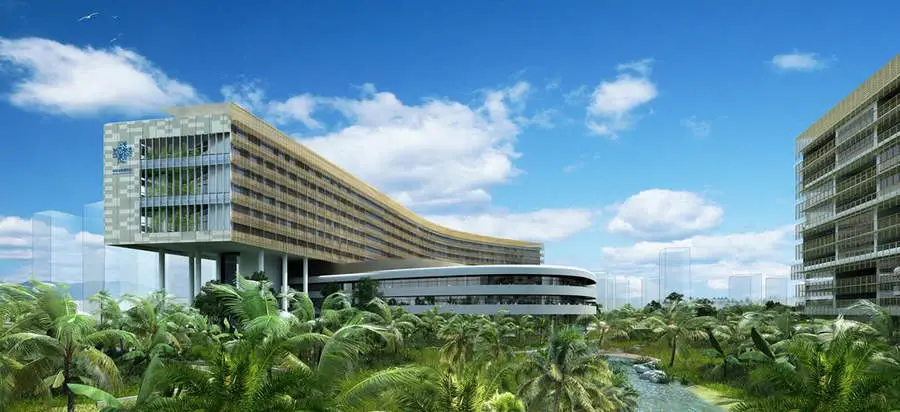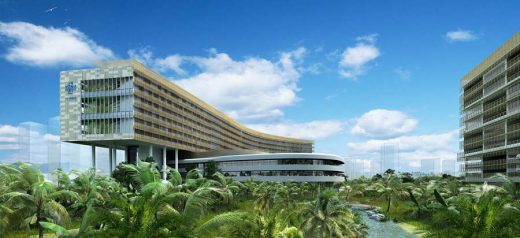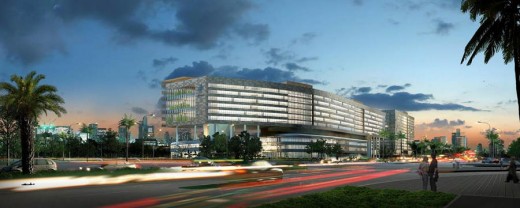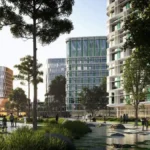Hainan Cancer Hospital, Haikou City Healthcare Building, Chinese Design Images
Hainan Cancer Hospital
Haikou City Healthcare Development, China design by Zhouxiang / CANNONDESIGN / Sha
15 Apr 2014
Hainan Cancer Hospital Building
Design: Zhouxiang / CANNONDESIGN / Sha
Hainan Cancer Hospital is an international cutting-edge centre of healing and research in Haikou City, China.
The building will house 1,200 hospital beds and over 11,000 staff and patients. It aims to achieve the coveted ‘Luban Award’, China’s illustrious award for design and construction.
The hospital is to have a 230,000m2 build area.
Hainan Cancer Research Hospital, a cutting-edge center of healing and research, incorporates a combination of Eastern and Western expertise and sensibility in every aspect of its design—from programming, design logic and construction to the user experience. This synergy manifests most notably in a vast central healing garden, shielded from the activity of the rapidly developing Haikou urban center by significant building masses—including a 170,000 sm main hospital in phase one and a cancer center, rehabilitation center, staff residence hall, and visitor hotel in phase two.
The open-air courtyard garden provides patients and families with a gentle, natural, non-clinical environment that encourages inward focus. Complementing the surroundings are various Chinese and aromatherapy plants known for their healing qualities, and distinctive vegetation studied for their medicinal applications.
Elevated walkways provide ease of access between buildings and operational visibility is minimized by restricting vehicular traffic to a perimeter road outside the courtyard and placing service traffic and most parking underground. Garden views from building interiors are maximized.
With the hospital’s director a recognized leader in the development of China’s evaluation standard for green building, the facility will be the first major Chinese hospital to achieve LEED Gold certification. The design employs both proven local building strategies and Western climate analysis and expertise for a comprehensive approach to green design and user comfort.
Shading devices are kept low-tech, and passive ventilation is achieved by raising the bed tower and much of the hotel, rehabilitation center, and residence hall on pilotis. In the gardens, a network of streams and ponds collects rainwater and provides evaporative cooling to gardens and, potentially, sections of certain buildings. Many materials are region-specific—including native basalt stone at the urban edge and internal facades of locally produced, sustainable woods—establishing a warm familiarity while supporting the local economy and reducing environmental impact.
Construction on the site began in March 2014 and will be completed by July 2015.
Hainan Cancer Hospital China images / information received Apr 2014
Location: Haikou City, People’s Republic of China
Architecture in China
Contemporary Architecture in China
China Architecture Designs – chronological list
Chinese Architect Studios – Design Office Listings
Baubeginn Haikou Tower South Building
Design: HENN architects

image © HENN
Hainan Cancer Hospital Building page : CANNONDESIGN – external link
Another Chinese Hospital Building on e-architect:
First People’s Hospital Foshan
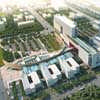
image by HMC Architects and Shunde Architectural Design Institute
Chinese Hospital Building : Design Competition for 1,500-Bed Hospital in China
Another building by CANNONDESIGN on e-architect:
Global Vascular Institute Buffalo, Niagara Medical Campus, New York, USA
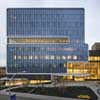
Global Vascular Institute Building
Chinese Buildings
Design: Arup, Herzog & De Meuron, China Architecture Design & Research Group
Birds Nest Beijing
Shanghai Sanctum
Architects: Wutopia Lab
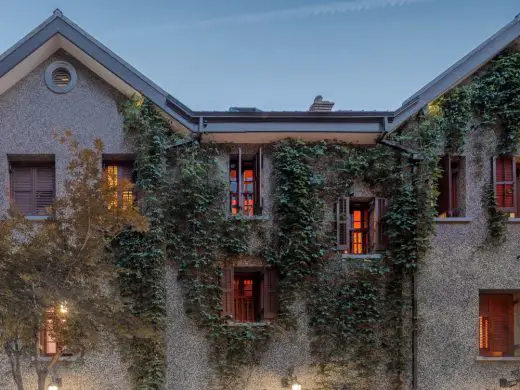
photo : CreatAR Images
Sinan Bookshop in Shanghai
South Sea Pearl, Haikou Bay, Hainan Island, China
Design: Diller Scofidio + Renfro
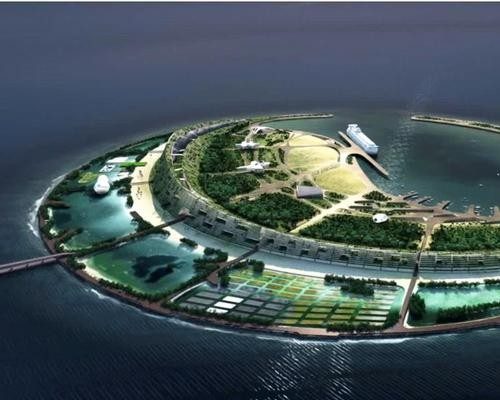
image from architect
Nanhai Pearl Artificial Island Design Competition
Comments / photos for the Hainan Cancer Hospital – Chinese Healthcare Architecture page welcome

